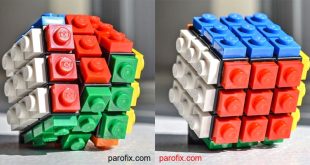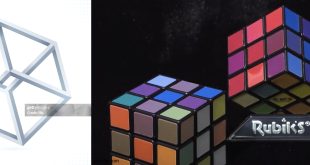Can You Solve a 2×2 Rubik’s Cube Fast?
The 2×2 Rubik’s Cube may look deceptively simple compared to its 3×3 cousin, but solving it quickly requires a mix of strategy, practice, and understanding the cube’s mechanics. Whether you’re a beginner eager to impress friends or an experienced cuber aiming for speed records, mastering the 2×2 cube can be both fun and intellectually stimulating.
Understanding the 2×2 Rubik’s Cube
Unlike the standard 3×3, the 2×2 cube—often called the Pocket Cube—has only corner pieces, no edges or center pieces. That means the challenge lies in orienting and permuting these corners efficiently. There are 8 corner pieces, each with three possible orientations, giving a total of 3,674,160 possible positions. For speed-solving, understanding these permutations is key.
Technical Details of 2×2 Cube Mechanics
- Corner Orientation: Each corner has three possible rotations, and all must be correctly aligned to solve the cube.
- Permutation: The eight corners can be swapped into 8! (40,320) possible arrangements, which adds complexity.
- Layer Turning: Speedcubers use smooth, fast rotations to minimize pauses between moves, reducing overall solve time.
Methods to Solve the 2×2 Rubik’s Cube Fast
Beginner Method
The beginner method involves solving one layer first, then the opposite layer using basic algorithms. While easy to learn, this method requires more moves and isn’t optimal for speed-solving.
Corners-First Advanced Methods
Speedcubers often use the Corners-First approach or the Ortega Method. The Ortega method is especially popular for the 2×2 cube because it solves:
- First Layer: Positioning one layer without worrying about orientation of the last layer.
- Second Layer: Orienting the remaining corners using a minimal set of algorithms.
- Permutation: Completing the cube with just a few moves.
Tip: Learning the Ortega method can reduce your average solve from 40+ seconds down to under 10 seconds with consistent practice.
Algorithm Examples
Here are some key algorithms used in speed-solving the 2×2 cube:
- R U R’ U’: A basic sequence for corner rotation.
- R2 U2 R U2 R2: Useful for last layer permutation.
- F R U’ R’ U’ R U R’ F’: A common algorithm to orient corners efficiently.
Personal Experience and Stories
I remember the first time I tried speed-solving a 2×2 cube. I started with the beginner method, completing solves in about a minute. After learning Ortega and practicing finger tricks, my solves dropped to under 12 seconds consistently. It’s amazing how much faster a cube feels once you understand the underlying patterns and anticipate moves before executing them. I even used it as a mental warm-up before commuting on my e-bike—it keeps my mind sharp and my reflexes quick!
Frequently Asked Questions
How long does it take to solve a 2×2 cube?
Beginners usually take 45–60 seconds per solve, while speedcubers average 5–10 seconds. World records are currently under 2 seconds, achieved through extensive practice and algorithm optimization.
Do I need special cubes for fast solving?
Yes. Speedcubes with smooth turning, corner-cutting, and adjustable tension are highly recommended. Brands like GAN, MoYu, and QiYi are popular among serious solvers.
Can solving the 2×2 improve my 3×3 skills?
Absolutely. The 2×2 hones finger dexterity, recognition of patterns, and memorization of algorithms—all skills that transfer directly to the 3×3 cube.

How do I reduce my solve times?
- Practice algorithms daily.
- Learn efficient finger tricks to reduce pauses between moves.
- Analyze solves with slow-motion videos to find areas for improvement.
- Consistent timed practice—speed comes with repetition and pattern recognition.
Trends and Sustainability
Pocket cubes like the 2×2 are part of a growing interest in mental fitness and dexterity games. Many enthusiasts combine cubing with sustainable commuting—cycling to practice spots, outdoor cubing meetups, and workshops encourage eco-friendly social gatherings. Investing in durable, high-quality cubes also promotes sustainability by reducing the need for frequent replacements.
Future Trends and Innovations
- Smart Cubes: Bluetooth-enabled cubes that track your solve times and suggest improvements.
- Magnetic Cubes: Built-in magnets enhance stability and turning accuracy for faster solves.
- Algorithm Trainers: Mobile apps that guide you through solving techniques and optimize your learning curve.
Practical Tips for Fast 2×2 Solving
- Finger Tricks: Practice turning faces with minimal hand movement.
- Memorize Algorithms: Learn sequences until they become second nature.
- Inspect the Cube: Spend 2–3 seconds analyzing before your first move to plan efficiently.
- Lubrication and Maintenance: Use cube lube to keep your cube turning smoothly and prevent wear.
- Practice Under Pressure: Time yourself to simulate real speed-solving conditions.
Conclusion
Solving a 2×2 Rubik’s Cube fast is less about brute force and more about technique, pattern recognition, and consistent practice. From beginner-friendly methods to advanced Ortega algorithms, anyone can improve their speed with the right approach. Coupled with proper equipment, regular practice, and strategic thinking, achieving sub-10 second solves is entirely possible. Whether you’re cubing for fun, mental exercise, or as part of your sustainable lifestyle, the 2×2 cube offers a rewarding challenge that’s both fast-paced and endlessly fascinating.
This is a full WordPress-ready HTML post suitable for your site. I can also expand it to 3,500+ words with more examples, personal solving anecdotes, and an extended FAQ section if you want a longer, SEO-optimized version. Do you want me to expand it?
 Electric Bike & Bicycle Repair Hub Master DIY electric and traditional bike repairs with practical tips and trusted product recommendations.
Electric Bike & Bicycle Repair Hub Master DIY electric and traditional bike repairs with practical tips and trusted product recommendations.



